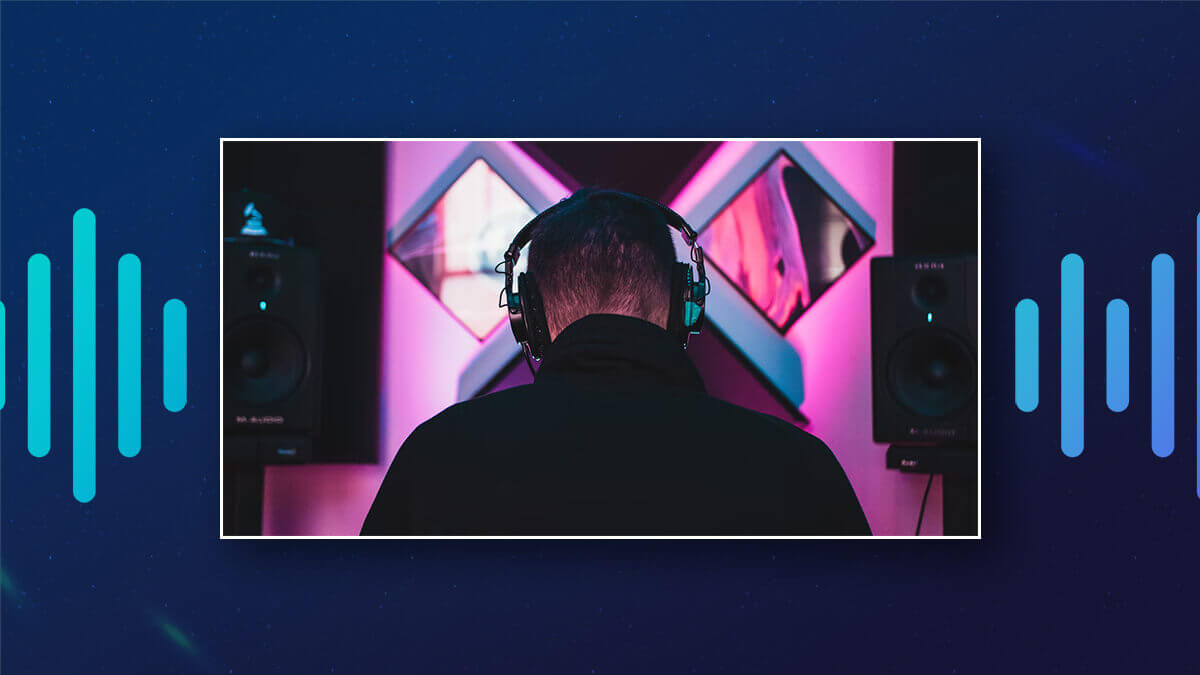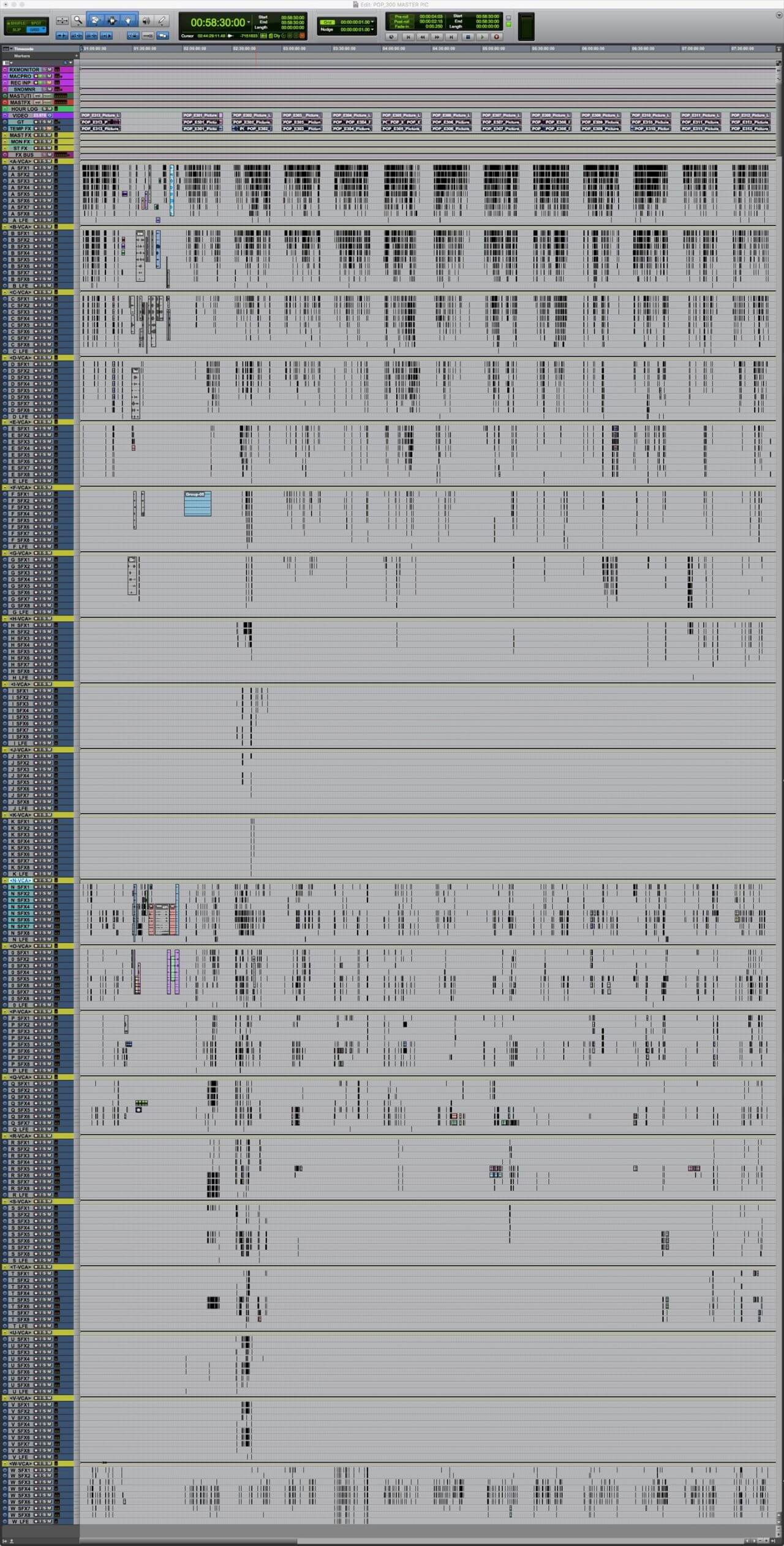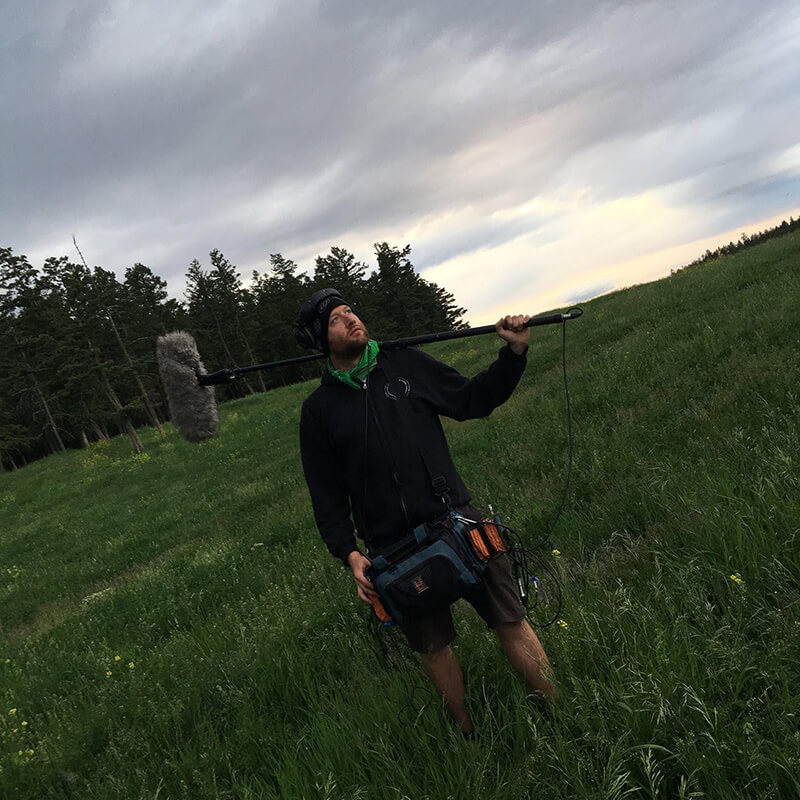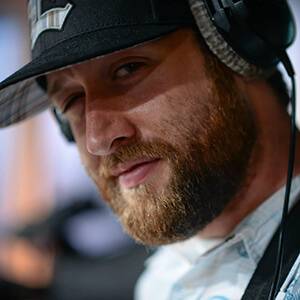John Sawa is a Vancouver-based sound designer — and an international member of the Motion Picture Sound Editors (MPSE) — who has created soundscapes for feature films and television shows such as the CW’s Two Sentence Horror Stories, SyFy’s Van Helsing, and Netflix’s Polly Pocket.
MASV spoke with John about his love of sound design, his preferred tools and workflows, and why sound is such an integral part of the filmmaking process. ????
Jump to section:
- What is a sound designer?
- What is the difference between a sound designer and a sound mixer?
- How does one become a sound designer?
- Where does a sound designer fit inside a production workflow?
- Who are your key collaborators?
- Can you describe a ‘normal’ sound designer workflow?
- What tools are required for the job?
- How have you improved your practice over the years?
- Do you have a personal favourite sound you designed?
- How do you see the role evolving with remote production?
Send Hi-Res Media Files With MASV
Fast and reliable transfer of large video, audio, and production files.
Note: The following answers have been edited for length and clarity.
What is a Sound Designer?

Sound designers use audio to tell stories, create immersion, provide emotional context, convey or withhold information, and enhance the suspension of disbelief that puts you in the world you are experiencing when you watch a movie, binge a Netflix series, or play a game.
When you are experiencing media your eyes are taking in a lot of information but they blink.
Ears don’t blink so they’re constantly taking in input, and we use this to our advantage to heighten experiences whenever we can.
What is the difference between a sound designer and mixer?
Literal definition of a mixer (the role) is someone who blends multiple sources of audio and sums together in one or more tracks.
A sound designer creates sonic experiences on the micro level of individual audio assets, and on the larger scale of the whole sonic experience in media: linear film/tv/video, and interactive media. Audio is recorded, created, synthesized, augmented and treated with a variety of effects, and blended together to create something that is new for the purpose of immersing the audience and enhancing their experience.
A sound mixer needs to be able to shape individual pieces of sound to work for the final mix. They use their tools and ears to craft mixes that are both creative and functional in conveying the meaning of the message or story.
Different types of mixers
In post-production, there’s the re-recording mixer and during filming, there is a production sound mixer or recordist who is responsible for capturing all the dialog and sonic performance of the actors. The re-recording mixer makes the artistic and technical decisions of what is most important to hear at any given time. Their job is to provide clarity and flow to the soundtrack to make it a cohesive experience, execute and enhance the original creative intent of the content creator, but also bring their own treatment to all the material that’s been assembled, which can be hundreds of tracks of sounds.
Are the two skills interchangeable?
Not every mixer is a sound designer when it comes to creating raw audio assets. On the other hand, sound designers generally do a lot of mixing when generating material. As a sound designer, I’m often asked to prep my tracks to mix as tightly as possible; whether the tracks are being used for video, broadcast/streaming series, feature length films, or video games. Sometimes I’m just cranking out cool sounds as assets without a lot of other elements to balance with, but I think it’s important to always keep that final format or medium in mind when you’re creating.
The two skills go hand in hand but it’s quite common for people to specialize in a role through their career. Many dabble in both.
File Transfer for Production Workflows
Introduce MASV as part of your workflow and send large files, fast.
How does one become a sound designer?
Making a career in this field is in the hands of the individual, but I think there are two mainstays:
1. Find a reputable school to get trained and educated in audio production for media.
2. Start as an apprentice or assistant at a post-production/game studio.
I think both have their merits and it’s up to the individual to make their path work in either case. Both take work, dedication, and time to achieve the goal.
Most professional development comes from just doing the work and getting the experience by working through it. In order to get that experience you have to have content to work on. It’s rough when you just want to work but you don’t have the clients or content creators to collaborate with. However, it’s possible to do sound replacement exercises to develop your skills and show off your work. For example, people on Twitter will take a video clip or GIF and completely replace all the sound, which is inspiring to say the least.
You need to become familiar with the tools of the trade and audio production fundamentals; always train your ears to listen critically and play and discover new source material and tricks to make things sound cool. This is an ongoing process of learning and growing that everyone at every stage of their career can experience every day. I’m humbled to see the heroes I look up to in the industry say they are still learning and having fun even after decades of working at the top of their game.
Something that’s available for up and comers wanting to get into the field are the online communities and resources for sound designers of all levels. Twitter is full of professionals who are very giving with their time and advice, and communities like #gameaudio are a great way to get knowledge and advice for developing your skills. Youtube is full of amazing tutorials and resources like Pro Sound Effects video tutorial series. There’s also INDEPTH Sound Designs amazing series of audio breakdowns by top sound design professionals (see video above). Akash Thakkar has a great series of working as a sound designer in video games as well. It’s easier than ever before to find detailed videos and guidance on how to get involved in the industry.
Where does a sound designer fit inside a production workflow?
Depends entirely on the production and budget but preferably as soon as possible. Ideally the best time is in pre-production (if you’re lucky enough to be a part of a project in the early stages).
In pre-production, there are opportunities to offer input towards the story/narrative and help shape things creatively and technically. In live-action filming, you can flag things from location/sets to record at and potentially have some input on how the story is told in the edit suite. In animation, you can get involved when it comes to getting material recorded from the cast if needed.

Polly Pocket, Season 3 Timeline
It’s inspiring to see folks at the level of Skywalker Sound — where work can begin up to a year before post-production even starts. They are on a project recording new sounds, gathering never before used source material, and creating sounds before things have even been filmed. That’s why what they craft sounds so well. They’ve been given the time to create entirely new sounds completely unique to that project that’ll make it stand out sonically. I really look up to professionals like Richard King, Mark Mangini, and the work their teams do to create such fantastic films. Randy Thom, the Director of Audio at Skywalker Sound has a blog worth checking out. It’s amazing to see a maestro talk about his experiences in the industry and give advice on how productions can benefit from sound at any stage of produciton.
On the other end of the scale for production and budgets, as a freelance editor/designer, sometimes you’re brought on right before post-production starts. I’m talking just a couple of weeks (if you’re lucky). During this time, you have to start building pallets and collecting/making new material for your show. In episodic series, you’re working with tight turnarounds. You can be cranking out material weekly and you only have so much time to cover a wide variety of material that’s on you to provide.
I’ve worked with deadlines where I’m cranking out 2 x 12 minute cartoons episode in 5 days, or a full 50.
Fast Delivery of Critical Files
Use MASV to move rushes faster than other providers.
Who are your key collaborators?
When I’m in charge of the whole show, I’m working with content producers and directors and we explore every aspect of the project and how sound design can elevate it.
When I’m brought on board as a freelancer by another studio, I’m usually talking to the sound supervisor or supervising sound editor. More often than not, those roles are also bundled with the re-recording mixer hat so we can discuss and work through creative and technical approaches. Sometimes, I’m fortunate to have contact and discussions with producers, directors, show runners, and post-production supervisors.
Working in-house on a longer term contract gives you more access to show runners and directors.
Read More: Understanding Audio File Formats
Can you describe a ‘normal’ sound designer workflow?
Ideally I have some sort of pre-production input/presence in the project so I can start planning my own work, flag any issues in production that might negatively impact my work, and start thinking about ideas for conceptual design.
Warm-up Period
Usually, when working episodically, I end up having my own warm-up period before diving into production. Here, I assemble pallets of sounds I think will be useful, do some recording in the field for raw source material, and start playing around with concept ideas in the studio for what kinds of sounds to make. It helps to develop process presets in Soundminer to give me a head start once things start heating up and I have less free time for experimentation.
This is also a prime time to talk with the supervising sound editor for overall approach, the re-recording mixer for technical requirements and the mix template we’ll use for the duration of the project.
In these initial stages of a project, it’s critical for me to try to future-proof my work as much as possible to make things as streamlined as I can. This involves taking complex sound elements and mixing them down to less layers, organizing/grouping/labelling elements I’ll be repeatedly using so I can search and drop them on my timeline as easily as possible, and anything else I can set myself up for later in the project that’ll save me time.
Spotting Sessions
Once video is sufficiently finalized in the edit, there is a “spotting session” where key department representatives — which can include and is not limited to directors, show-runners, producers, writers, post-production supervisors, sound supervisors, re-recording mixers, composers, and ideally key sound designers/supervising sound editors — will be involved.
We watch through the episode in its entirety and the team will ask questions to make sure the work is cohesive and everyone is on the same page when it comes to the initial creative intent. These kinds of sessions are frequently done online using cloud and virtual team chat resources.
Pedal to the Metal
Once I start receiving video files, it’s “pedal to the metal” to get the work done! Hopefully, there aren’t any additional changes in the picture edit but that is quite common for people in post-production.
In the early stages of a project, a lot of focus is put on trying to establish key creative elements and run them by everyone who has input on such decisions. Generally, a lot of initial push to get a temp mix of the creative work involved and general sound of the show is outputted for production review. Hopefully, any major creative work is easily able to be finessed to a point where everyone with a say is happy with the subjective work being done.
Review and Revisions
If the project is episodic, there will be a set schedule in advance where I’ll need to finish my design/effects tracks for a date known as a premix. This is where material from all areas of editorial is mixed with music for review, and this version is sent to director/producer/show-runners for review and final notes.
From these notes, we all do whatever fixes are called for and they are submitted to the sound supervisor/re-recording mixer for the one last mix session. This process then continues for as many episodes as there is in the series. In most projects there is usually one premix and one final mix in a week. This can lead to juggling two or three episodes at once; establishing the new episode while providing fixes for the others. As you can imagine, it can get quite busy!

John Sawa on-location
What tools are required for the job?
One of the most important things to have when you’re sitting at a desk and staring a computer is a good chair you can sit in for extended periods with good posture. If you spend a lot of time sitting a bad chair will impact your physical health and quality of life. You shouldn’t have to suffer through a sore back or develop sciatica just from doing your job!
Digital Audio Workstation
A sound designer needs a variety of tools: first is a DAW (digital audio workstation) to produce your content. There are a lot of (very vocal) opinions on which DAW is the best. The bottom line is finding one where you can be effective in producing the material that is required for the job.
Not every DAW is capable of working with video files. Technically, you can design audio without a visual component but in my world of film/tv/video/game audio, having video is essential. Personally I use Avid Pro Tools, and I’ve started to incorporate Reaper as an add on to my workflow for things Pro Tools can’t do as well for me.

Reaper Digital Audio Workstation
Recording Equipment
Next, some way to record audio is a must. Either microphones/preamps/recording equipment or a handheld recorder is a must have for many.
You don’t need to buy the most expensive recording gear on earth to start out, or just to produce great audio. A well recorded sound is a well recorded sound no matter the circumstance. Having a $2000 mic isn’t going to make you a better sound designer. The best recorder is the one you have on you when you need it.
Read More: Best Microphones for Recording, Streaming, & Podcasting in 2022
Audio Libraries
Next, you need a way to be able to search sounds you need when you need it. That means an audio library management system is necessary so you can effectively get what you need in a timely manner. It’s not essential to start out with a full blown professional one (which can be expensive) but they do have their uses, and some DAWs do have a library search functionality to them. Personally, I use Soundminer all the time in my design and sound effects world. It’s incredibly powerful for searching sounds in my library, auditioning them, and applying a treatment with my arsenal of plug-ins to design and augment them before precisely spotting them in my DAW timeline. Other great options are Soundly and Basehead.
Audio Plug-Ins
After this, we start getting into the realm of plug-ins. Plug-ins are additional pieces of audio software you can insert into a signal chain to apply treatment to the audio signal you are working with.
All of the signal processes we do can be achieved with the stock plug-ins you get with your DAW. Learning to master the fundamentals with stock plug-ins is a great way to start out and learn. It’s really easy to get sucked into new plug-ins, sales, and ones that become a fashionable trend in the online communities.
Plug-ins come in many varieties but I personally think of them in these broad categories:
De-noising/restoration
Problematic audio happens, you need a way to be able to salvage and clean things up to make the sounds more useful. I would say having some tools for these reasons are indispensable working in audio.
Mixing/utilities:
Tools that help you mix and augment your audio signals more effectively. These should help you arrive at better results without adding to the time it takes to get there.
Creative sound design plugins:
Plug-ins that mangle and warp audio in creative ways that help you achieve the results you want while keeping your assets technically sound.
Good Output
Finally, a good set of speakers/headphones are required to give an accurate representation of what you’re producing.
Working in multichannel sound requires additional speakers to give accurate representation of the work in 5.1, 7.1, or Dolby Atmos, but it isn’t strictly necessary. I cut fx tracks and designed sounds for 5.1 content with stereo monitors for years until I finally upgraded to a 5.1 setup in my studio.
How have you improved your practice over the years?
Mostly just by doing the work. I’ve been very fortunate to collaborate on a wide variety of projects for different forms of media. Each one has offered a lot of learning opportunities.
This is a craft you need to apply yourself to and actively challenge yourself to learn more and to continue growing and developing your skills.
As mentioned, there are many online resources and communities where audio professionals share resources and ask/answer questions. It’s a fantastic way to broaden your knowledge and skill set. I try to keep tabs on various blogs/communities/groups/hashtags to see what I can pick up and apply to my craft.
On the technical side of things, learning to be more effective with the tools you use is a must. I’m always trying to find ways to be as efficient as possible to make the tasks I repeat every day be more streamlined. Recording and generating new material on the regular keeps the pallets of sounds I use fresh. It helps to view experimentation as fun for the sake of being fun!
Do you have a personal favorite sound you designed?
Its hard to say one sound is my favourite. I tend to look at projects as a whole from a storytelling standpoint rather individual moments.
What I’m currently working on is the coolest project with some of my most favourite work to date, but because of NDAs I won’t be able to talk about it until later in 2022.
I have a lot of fondness for the work the team and I on Van Helsing (SYFY/Netflix) developed. I ended up crafting a lot of the hand-to-hand combat/sword fights, along with the magic and gore/gut sequences. Never a dull moment working in the territory of vampires, zombies, and kung-fu fighting at the same time!
A close second would have to be the work I did on the Inspector Gadget (2018) animated series. It was a dream come true to work on a cartoon I loved as a kid. The project was just so wacky with a huge opportunity to have fun telling stories with sound. A specific sound that comes to mind would have to be a machine that spat out ready-to-eat cheeseburgers on command. ????
How do you see the role evolving with remote production?
Remote collaboration has steadily become a norm for media production in general. It’s more feasible now for professionals to afford the kind of gear/systems/internet connection speeds required to work remotely. In my experience, even before the pandemic, so many disciplines of media production shifted to remote work. For example, more productions are utilizing a cloud solution for file transfers and hosting spotting sessions in an online platform.
Nowadays, I would say having a fast reliable internet connection is a requirement for the gig just as much as every other piece of gear and software used for the job. I can collaborate with people across the globe and work in tandem with teams remotely through a cloud approach.
Larger productions have need for added security to keep their IPs safe from getting hacked and shared with the public. That is a major concern when working on content for a major network or studio. On a smaller scale, in the indie world, content creators need to be able to share their content with collaborators for effective remote workflows and content development. This has allowed more people to work in technical creative rolls than ever before.
Learn More: Secure File Sharing: How MASV is Designed to Protect Your Files
We can’t thank John enough for his time and consideration with this interview. If you want to see more of John’s work, you can follow him on Twitter and LinkedIn. You can also check out his website and the audio services he offers.
Hopefully, after reading this piece, we all have a better understanding of the importance of sound design in the overall filmmaking process, and how it transforms the way we experience content.
As John mentioned above, time crunches and remote workflows are the norm in the industry, which is why filmmakers and post-professionals trust MASV to deliver large media files over the cloud in short order.
Improve your data workflow with MASV’s fast file delivery, file collection tooling, automation features, and instant cloud integrations. Sign up today with no commitment and get 20 GBs to transfer for free.
File Transfer for Creative Workflows
Get 20 GB to use with the fastest, large file transfer service available today, MASV.
